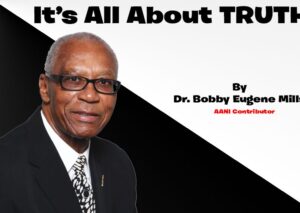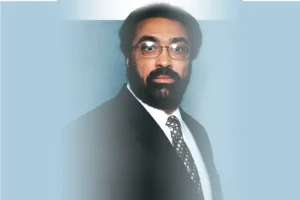How many times have we heard this phrase, “I’m not a racist, I have many Black friends,” and have you taken a good, long look at the person who is making the statement?
If they are a president or politician, what is the background of their cabinet or executive team?
If they are an employer, what is the racial and ethnic make-up of their staff?
If they are the head of a sports organization, where there are plenty of Black athletes, how many times have they “taken a knee” with their players in support of their religious, social or patriotic beliefs?
If they are the head of a major motion picture network, how many times have they supported Black film makers with big budget box office opportunities?
How many times have you seen true support of Blacks without hidden agendas?
There are plenty of companies who have little to no African Americans in leadership roles. We live in a sad day and age when, every time we look around, Blacks are finally being hailed as “the first” in the company’s history to earn a certain title. Yes, while it is a victory, the sadness comes that it took so long to get there.
Look at Colin Kaepernick, who was Black-balled for bringing attention to the social injustices of America, tired of seeing innocent Blacks involved in modern-day lynchings by authority figures. We had to lose too many lives, like Ahmaud Arbery, Breonna Taylor and George Floyd before the NFL would even make a half-baked Public Relations campaign in response to the protests. Yet, Kaepernick remains on the outs. That speaks volumes.
And film makers like Spike Lee had to use personal funds to create movies Blacks wanted to see, all because no major backers would invest in Black movies fearing they were not profitable. They really didn’t even believe we could draw major crowds (with the exception of Will Smith and Eddie Murphy) until Chadwick Boseman became a global phenom as Black Panther.
President Joe Biden appears to be on a mission to “right the wrongs” of politics by making a racially diverse cabinet, representing people from all walks of life. But even as we applaud his movements and historic selection of Kamala Harris as vice president, some say she wasn’t the “best candidate,” but had the right look at the right time.
Some people still question, is this a form of diversity … or “forgotten” affirmative action, placing minorities in positions they’ve always earned, but have been cut out of? Or is this all a form of tokenism, using Blacks or other minorities to fit agendas in these times of unrest?
Do you know the difference?
As noted on HR Exchange, the term affirmative action was initially used in Executive Order No. 10925 signed by President John F. Kennedy in 1961, regarding the treatment of employees without regard to their race, creed, color, or national origin. The Order was also expanded by President Lyndon Johnson in 1967 to also include women. Affirmative action is based on legal directives requiring federal contractors to measure employment practices and to develop a workforce that is reflective of the community in which they work.
Diversity is a more inclusive concept and includes people of various religions, marital status, sexual orientation, economic status, and a variety of other different states of being. Diversity is also considered a strategic business practice which continues to increase as distinctions among people in the workplace become more prevalent.
Diversity and affirmative action deal with issues related to discrimination, but in different ways. They are complementary in function, but different in their origins and goals. While affirmative action focuses on taking positive steps to get individuals into the organization, diversity in the workplace works to change the culture within.
During these days of racial and social unrest across America, “Diversity Officer” positions are being created at most major companies and organizations who are taking a bandwagon CYOA (Cover Your Own A$$) approach, not only for compliance reasons, but in an effort to “prove” to the public they have the best interest of employees in mind.
LinkedIn data shows that the No. 1 D&I job title globally is diversity manager, with director of diversity coming in at No. 2, head of diversity at No. 4, and chief diversity officer at No. 6.
The data also shows there was a dip in the number of D&I jobs posted immediately after the COVID-19 lockdowns, but that did a complete turnaround, with a major spike after the Black Lives Matter movement erupted with widespread protests in late May and early June.
Suddenly, companies wanted to pull out their “Black cards” and show they were diverse.
Then there’s good old tokenism, which is the practice of making only a symbolic effort to be inclusive to members of minority groups, especially by recruiting people from underrepresented groups in order to give the appearance of racial or sexual equality within a workforce.
Do you see how the “Diversity Officers” play right into this?
While we, as Black people, are grateful for the advancements and inclusion on the rise today, many of us wonder how soon it will end.
We live in a bandwagon generation, where people jump on what’s trendy at the time. While some people are protesting for racial and social justice, others are out in the picket lines because they want to be seen in the mix, oftentimes not even knowing what the protest is all about. And some politicians don’t stand for or with Blacks until they need the Black vote during election years.
At the end of the day, in order to stop needing affirmative action and diversity officers, and put an end to the “tokens” being used for the okie dokie, we need to BUY Black, BUILD Black businesses, and continue to BE Black; proud, alert and unapologetic.










